Solar prominences are clouds of charged particles ("plasma") above the solar surface squeezed between magnetic regions of opposite polarity. Being cooler and denser than the plasma underneath and their surroundings, they appear as bright blobs when seen near the solar limb and as dark lines when seen on the solar disk (then they are called "filaments"). These features are not visible in white light, and require special filters such as the Hydrogen-alpha (H-alpha) line in the red part of the solar spectrum at 656.3nm, which shows the lower atmosphere of the Sun at temperatures between 6.000 and 20.000 degrees. They are also visible in extreme ultraviolet (EUV) at passbands near 30.4 nm showing the Sun near 80.000 degrees. In EUV filters showing the Sun at even higher temperatures, e.g. 19.5 nm filter for temperatures near 1.25 million degrees, the most dense and coolest portions of the prominence become visible as dark strands moving against the bright background of the solar atmosphere.
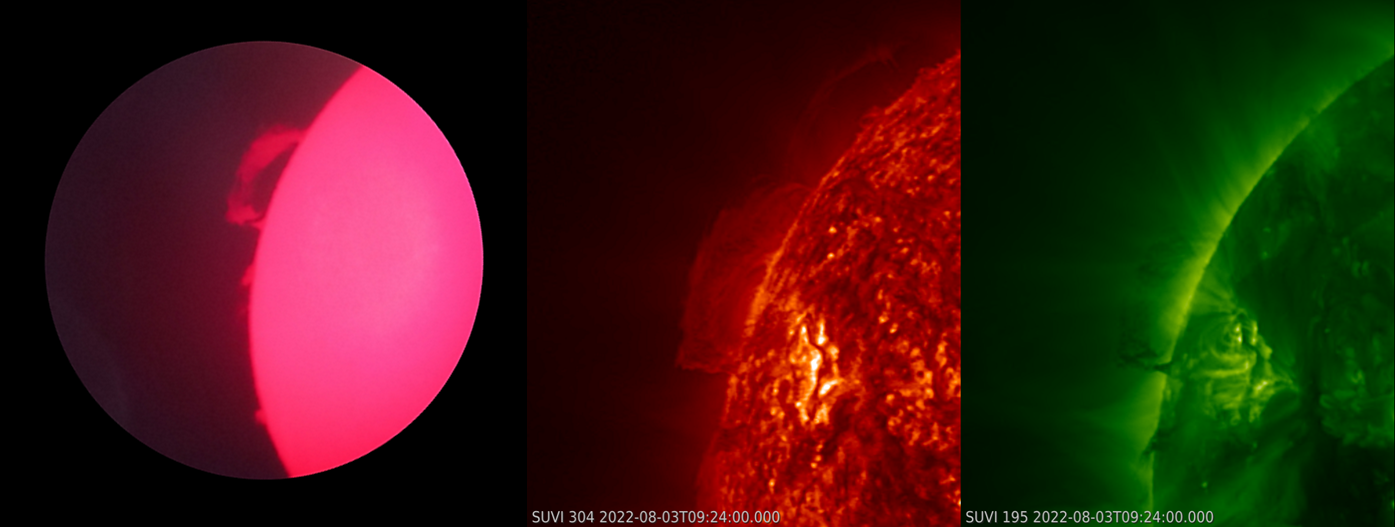
The images above show a prominence rotating over the northeast solar limb on 3 August around 09:20UTC. The picture to the left is as seen through a small H-alpha telescope, whereas the other two (slightly zoomed and correctly oriented) images are in EUV taken by SUVI (Solar UltraViolet Imager) on board the GOES-16. The reddish image is the prominence as seen at 30.4 nm, the greenish image is the same feature as seen with a 19.5 nm filter. Notice the dark prominence strands in the latter. The apparent height of this quite dynamical prominence was about 80.000 km in H-alpha and SUVI 195, and about 96.000 km in SUVI 304.
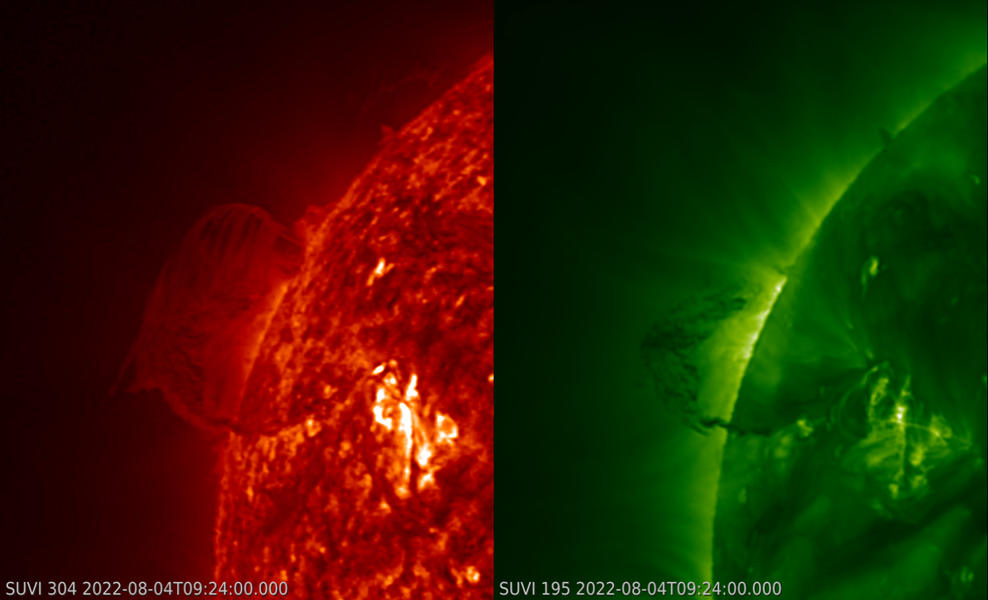
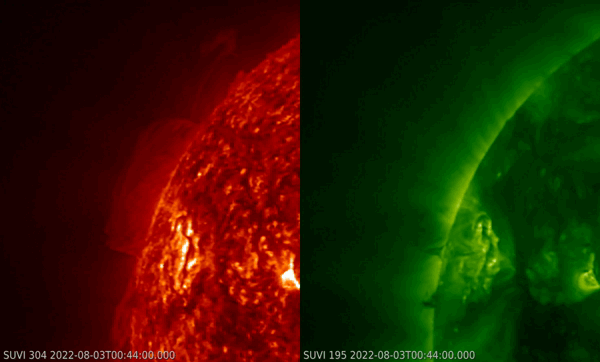
The next day, the prominence's height had risen to resp. 116.000 km and 135.000 km (see the SUVI imagery above, with the movie spanning 3 to 5 August). A portion that had already rotated over the limb was visible as a filament. The prominence was now becoming unstable and dissolved during the remainder of the day and the next day (5 August). Most of the material remained trapped in the solar magnetic fields and rained down to the solar surface. No large coronal mass ejection (CME) seems to have been associated with this prominence "eruption". The wide CME that can be seen in coronagraphic images (SOHO/LASCO C2 - image underneath) later on 6 August is thought, based on STEREO-A coronagraphic imagery, to originate from the Sun's far side.
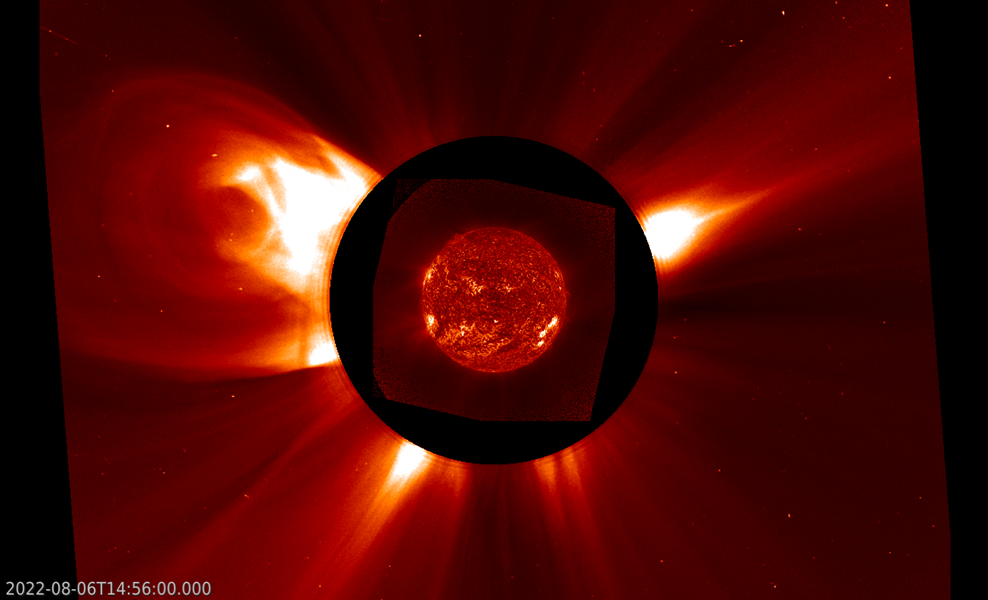
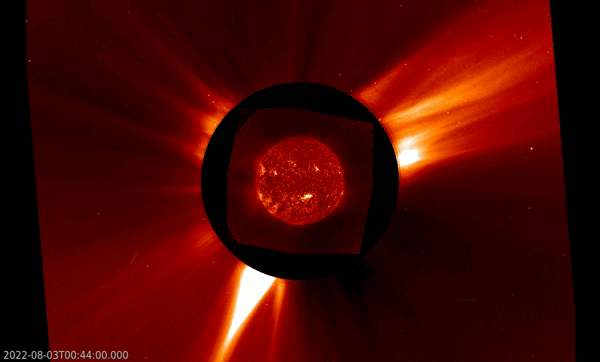
Movies and images were created with the Space Weather Helioviewer (SWHV).





